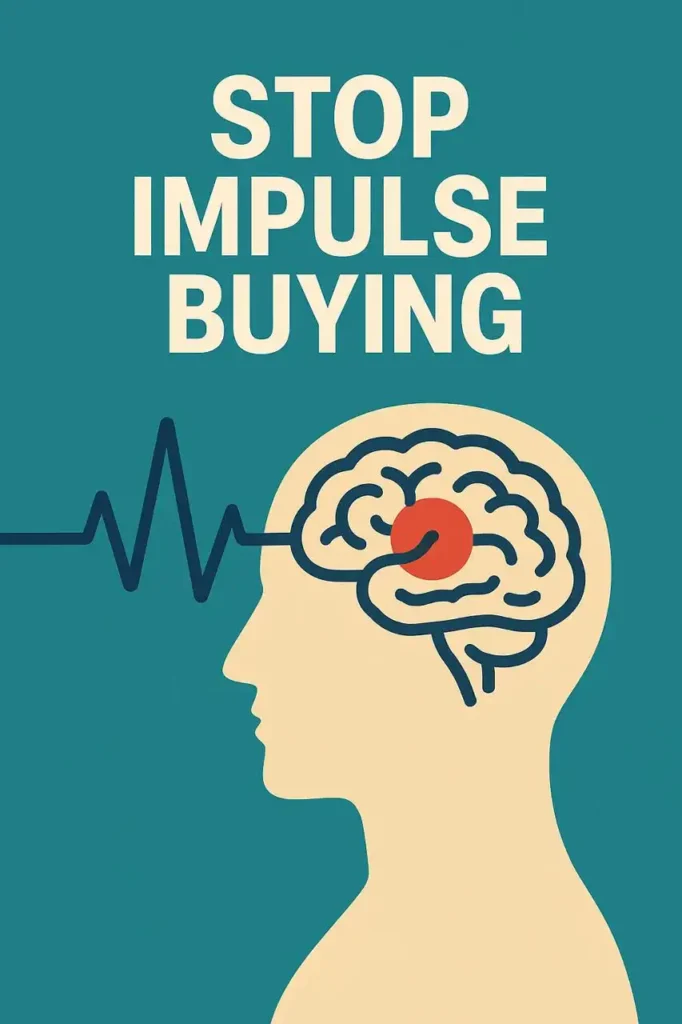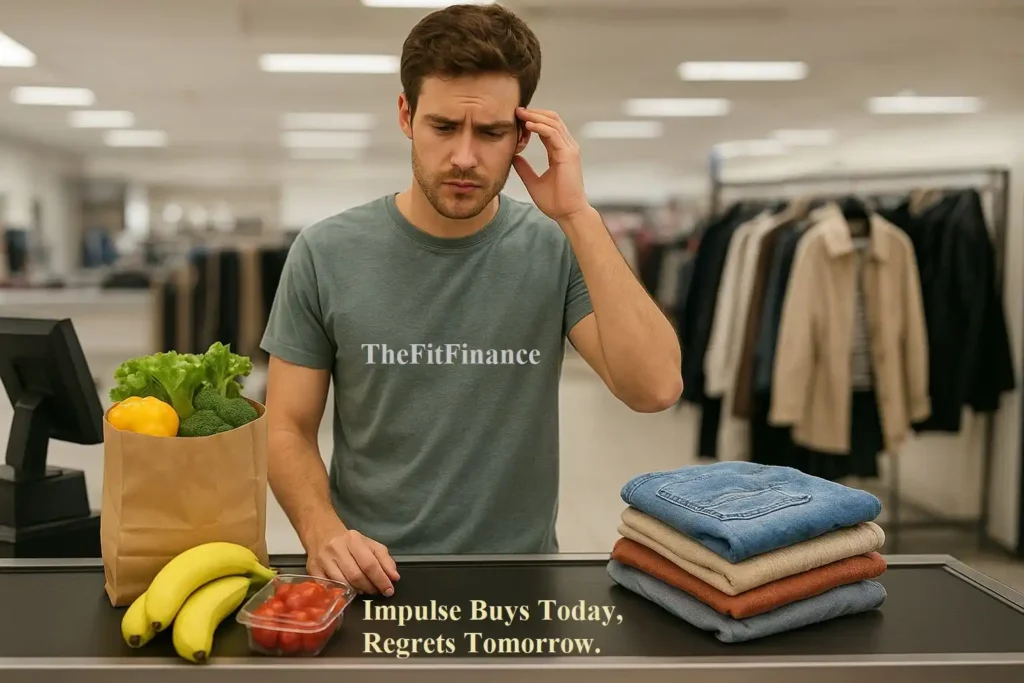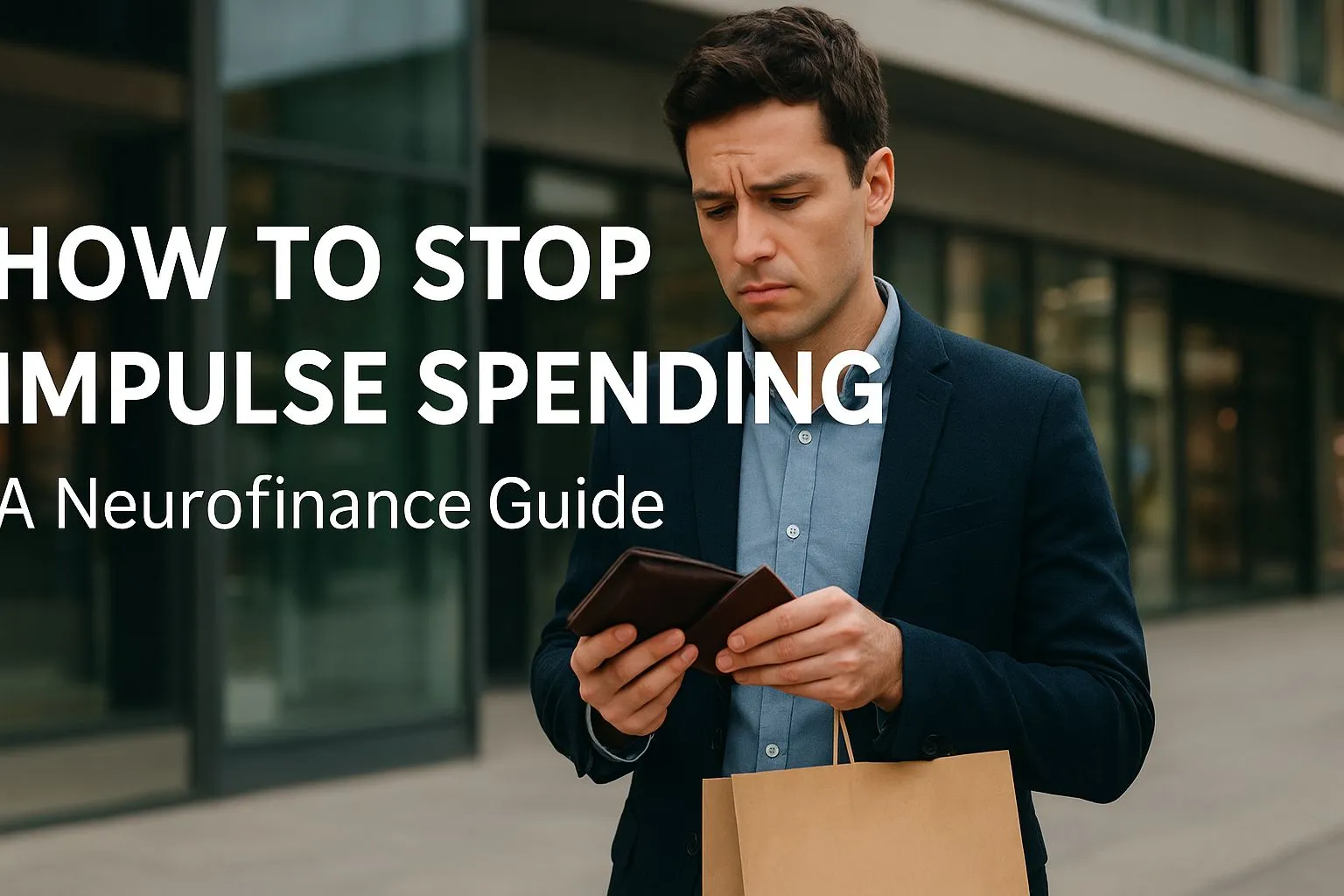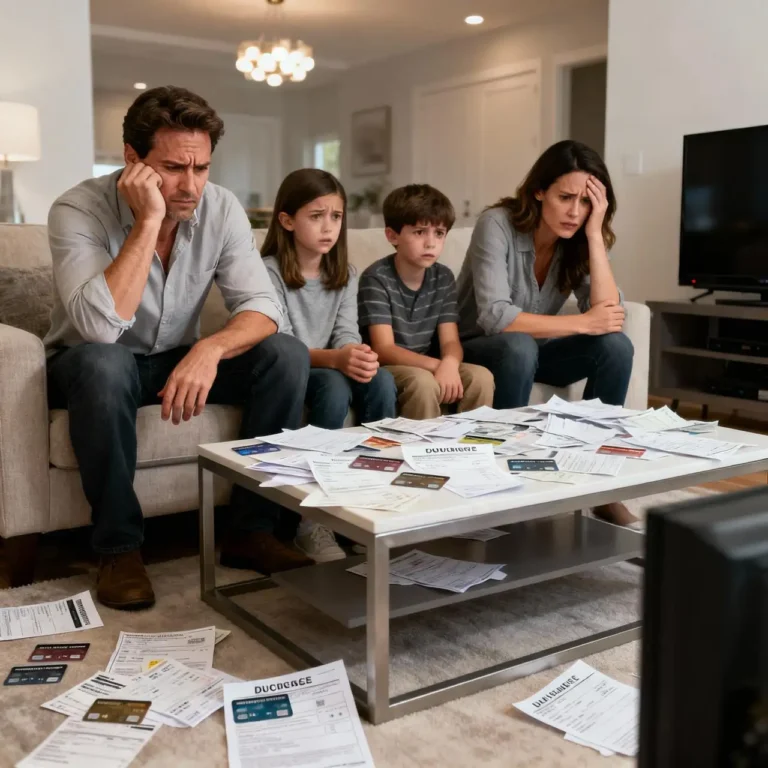The Secret War Inside Your Brain
Imagine this: You walk into a store for “just one thing,” and an hour later, you are walking out with a bag full of items you swore you did not need. Sound familiar? That is not just bad budgeting—it is your brain working against you.
Everyone occasionally caves into the temptation of buying something unplanned. According to one survey, Americans’ impulse spending is about $150 every month on unplanned purchases, often emotionally driven by stress, boredom, or clever marketing. Common impulse buys include candy at checkout, gadgets, clothes – and yes, even cars (one writer quipped about walking into a dealership “just to browse” and leaving with a new SUV). Understanding why we spend on a whim involves psychology and brain science. An emerging field called neurofinance examines exactly how our brains govern financial decisions. By peeking into your neural circuitry, neurofinance helps explain those urges to splurge, so you can fight them more effectively.
What is Neurofinance?
Neurofinance is a branch of behavioral finance that blends neurology, psychology and economics to study how our brains make money decisions. In simple terms, it treats spending behavior as a brain-driven process. For example, research shows that even when you’re not consciously deciding, the brain’s “reward” center (the ventral striatum) is continually evaluating how much you like items in front of you. When you do decide whether to buy something, additional brain circuits weigh factors like price and personal value. In other words, part of your brain is “figuring out” how much to spend even before you realize it.

Why Should You Care about neurofinance?
Because knowing this helps you spot when your brain is getting the upper hand. It explains why bright packaging, sales displays and even your emotions can hijack spending decisions. As UC San Diego neuroeconomist Uma Karmarkar notes, our brains evolved to seek rewards immediately – a tendency that clashes with modern budgeting. By studying neurofinance, researchers hope to design interventions (from budgeting tools to brain-training) that align our ancient impulses with long-term goals. In short, neurofinance gives us clues on how to outsmart the part of our brain that is always “in sale mode.”
Can Neurofeedback Help with Impulse Control?
One related brain-based tool is neurofeedback – a training method that lets you see and then consciously modify your own brainwaves. In Attention Deficit Hyperactivity Disorder (ADHD) and addiction research, neurofeedback has shown promise for improving self-control. For example, a controlled study found that ADHD patients who did theta/beta neurofeedback showed reduced impulsive behavior afterward. The authors note this likely reflects improved brain inhibition. Likewise, a meta-analysis concluded that neurofeedback treatment yields large effect sizes for reducing impulsivity in ADHD.
So, can neurofeedback help with impulse control? The evidence suggests yes, at least in the context of ADHD, which often features impulsivity. By strengthening the brain circuits for inhibition, neurofeedback can help people pause before acting. However, it’s not a magic bullet: sessions and guidance are typically needed, and effects vary. Still, if you’re struggling to stop impulse spending, neurofeedback (often combined with therapy or medication) is one more avenue to consider alongside budgeting and habits.
Strategies to Curb Impulse Buying
People often ask, “What are some of the ways/strategies that can be used to help curb impulse buying?” Fortunately, finance experts and psychologists offer many practical hacks. Here are proven approaches:
• Recognize your triggers. Notice what situations spark your impulse to spend. Do you shop when stressed or bored? Do sale emails make you click “Buy” without thinking? Learning your triggers (like emotional states, flashy ads or limited-time deals) can help you anticipate and avoid them. For instance, if seeing a new text message from your favorite store triggers a purchase, consider unsubscribing or deleting that app.
• Create a strict budget. A clear, written budget is one of the best defenses. Chase Bank advises that learning how to stop impulse spending often feels like “competing against your nature,” but a solid budget can help you persevere against that urge. Knowing exactly how much you can spend (and on what) makes unexpected purchases stand out as blows to your plan. Budgeting isn’t just tracking receipts – it’s aligning spending with goals. For example, build in a category for “fun money” or impulse allowance so you can still treat yourself without breaking the bank.
• Shop with a list and a plan. Before heading out (or logging on), make a detailed shopping list of what you need. Stick to it. Writing down priorities keeps you anchored, as if you were on autopilot for anything not on the list. For groceries, this means planning meals so you only buy ingredients you’ll use, and even checking store specials ahead of time. A list + meal plan combo dramatically cuts down random snack or junk food purchases.
• Delay decisions (“sleep on it”). Resist the urge to click “Buy” immediately. Implement a waiting period – even just a few hours can help. For online shopping, one trick is to put the item in your cart and then walk away. If you can forget about it for 24–48 hours, chances are good it wasn’t crucial. Chase experts call this “sleeping on” purchases – taking a night to mull over a buy. Often the next day you realize it’s not that important. This pause gives your logical brain time to catch up with the initial emotional impulse.
• Pay with cash or limit cards. Paying in cash can make you more mindful of spending. Leave most of your credit cards at home and carry just a small amount of cash. When you physically hand over bills, you feel the loss of money more. If you must use cards, pick one and set a personal spending limit on it (or use a prepaid gift card) to cap unplanned buys.
• Use support and accountability. Bring a friend or family member who knows your goals when you shop – they can help you stick to the list. Even casually telling someone, “I’m tempted to buy this” can reduce the urge (and maybe give you a dose of reality). Some people set public goals (like social media posts on saving) to add accountability.
• Distract yourself. Substitute another activity for shopping when the impulse hits. Maybe go for a quick walk, call a friend, or read a chapter in a book. Shimmer’s ADHD blog suggests having a pre-written list of non-shopping activities (exercise, hobbies, etc.) to do when you feel like spending. Even browsing your dream home listings or planning a vacation can redirect the “thrill” you seek and defuse the shopping urge.
• Embrace conscious flexibility. Don’t treat yourself as being restricted forever. Allow some room for small, mindful splurges that fit your budget (this is that “fun money” again). The key is the intent: these are planned indulgences, not accidents. This way, you won’t feel deprived, and you’ll be less tempted to unplanned purchases.
Implementing multiple strategies together is most effective. For instance, use a list and a waiting rule and pay with cash. Over time these habits retrain your response: buying on impulse becomes an exception, not the norm.

Budgeting apps, shopping lists, and expense trackers are powerful tools—but they only manage the surface level of spending. Practical strategies like mindful shopping and delayed purchases help you resist temptation in the moment, yet impulse spending often sneaks past logic because it’s driven by emotions and brain chemistry.
The real breakthrough happens when you tackle impulse spending at the root—inside your brain.
That’s where neurofinance steps in. By combining proven money habits with brain-training apps that rewire your decision-making, you get a double shield against overspending. This balance of discipline plus neuroscience doesn’t just cut down on wasted dollars—it builds a stronger, lasting relationship with money.
Using Brainwave Apps to Rewire Your Spending Habits
Most advice on how to stop impulse spending focuses on budgeting tricks or self-control exercises. But here’s the truth: your brain is the real battlefield. This is where neurofinance comes in—teaching us how neuroscience influences money choices.
One of the most exciting breakthroughs in this field? Brainwave apps that help you literally rewire your brain to make smarter financial decisions. Let’s break it down.
1. Fight Inside Your Brain
Ever gone to Target, Walmart, or Amazon for “just one thing” and left with a cart full of stuff you didn’t plan to buy? That’s not simply bad budgeting—it’s neuroscience at work.
• Dopamine Rush: Shopping gives you a hit of dopamine, the same chemical linked with addictive behaviors.
• Decision Fatigue: The more choices you face, the weaker your self-control.
• Pain-Free Spending: Swiping a card feels painless compared to handing over cash, tricking your brain into overspending.
👉 Solution? Train your brain with neurofinance hacks instead of fighting willpower battles.
2. What Are Brainwave Apps, and How Do They Help?
Brainwave apps use binaural beats, mindfulness, and behavioral nudges to improve focus and control over spending urges.
How they work:
• 🎧 Binaural Beats: Special sound frequencies that calm your brain and sharpen decision-making.
• 🧘 Guided Meditations: Increase awareness before purchases.
• 🔔 Behavioral Nudges: Real-time reminders when you’re about to overspend.
Best Apps to Try Today:
1. Brain.fm → AI music for focus & resisting urges.
2. NeuroNation → Personalized cognitive training for money decisions.
3. Noisli → Soundscapes to replace stress-driven shopping.
4. ThinkUp → Positive affirmations to rewire money beliefs.
3. Practical Hacks to Use These Apps
• Pre-Shop Brain Training: 10 minutes of focus-enhancing beats before entering a store.
• Spending Alerts: Set up reminders that pop up near your budget limits.
• The 90-Second Rule: Pause before buying → Ask: Do I need this? Will I regret it? Can it wait 24 hours?
• Swap Retail Therapy for Sound Therapy: Feeling stressed? Open Noisli instead of Amazon.
4. The Future of Neurofinance
Imagine wearable devices that detect when your brain is about to trigger an impulse-buy urge and send a calming alert. That’s not sci-fi—it’s where neurofinance is headed.
The future of money management wil not just be about spreadsheets; it will be about hacking your brain for wealth-building decisions.
How to Stop Impulse Buying Food
Going grocery shopping on an empty stomach is a classic way to trigger impulse buys. People often ask, “How to stop impulse buying food?” The simplest advice from nutrition experts is to eat before you shop. A North Dakota State University extension specialist explicitly advises, “Be sure to have a snack before going grocery shopping to prevent impulse buys. Most of us do not make the wisest choices when we are hungry”. When you are hungry, even healthy logic goes out the window and everything looks delicious.
In practice, combat food impulse buys by planning your meals a week ahead and shopping with a strict list. Check your pantry first so you don’t buy duplicates. Use only store flyers or apps to plan menus around sales. Also, avoid wandering the store too much – head straight to the items you need. By removing hunger and indecision, you will focus on essentials (like fresh produce and proteins) and skip the candy aisles or supermarket novelty sections. An extra tip: compare unit prices carefully. Sometimes we grab the biggest bag of chips thinking it’s a better deal, only to toss it later – so evaluate whether bulk impulse buys truly save money.
Smart snack approach: Even if you want a treat, make it count. Instead of buying junk food on impulse, pre-commit to healthy snack options on your list. For example, plan to grab a package of nuts or fruit if you really feel hungry while shopping. This turns an impulse into a planned purchase of something both enjoyable and nutritious.

How to Stop Impulse Buying Clothes
Clothing ranks among the top impulse purchase categories. The question “how to stop impulse buying clothes?” puzzles many fashion lovers. A good first step is to apply the same delay tactics: sleep on it. If you find a shirt, dress or accessory you want, don’t buy it immediately. Leave it in your online cart or walk away and return later. In fact, studies of impulse behavior show that waiting even 24 hours can cause your initial urge to fade. If after a day you still love the item and it fits your needs, it’s likely a more reasoned decision. One shopping expert quipped that if you can forget an item sitting in your cart overnight, it probably wasn’t essential.
Another strategy is to change your shopping approach. For instance, one tip is to avoid always hitting new arrivals or sale racks first. The Massachusetts consumer protection blog notes that clothing stores often display full-priced items at the front. Give yourself permission to browse the whole store – look out for clearance racks or subtle deals at the back. This not only saves money but also gives you time and distance from the high-pressure marketing.
Set a clothing budget or capsule wardrobe goal. Consider a “one in, one out” rule: buy a new piece only if you discard an old one. This forces you to truly consider whether you need it. You might also adopt the mindset of a stylist: when shopping, ask “Does this match what’s already in my wardrobe?” If not, it’s probably impulse.
Finally, carry one form of payment (like a debit card with limited funds) so you can not overspend. Some people even leave credit cards at home altogether. By making the act of buying more deliberate, you can tame those in-the-moment urges.
How Can I Fight the Urge to Buy a New Car?
Large purchases like cars are usually should-not-be impulse buys, yet it can happen. If you catch yourself thinking “How can I fight the urge to buy a new car?”, treat that feeling with extra caution. First, remember that a car is a long-term financial commitment (loan, insurance, maintenance). Ask yourself: do I need a new car now, or am I just swept up in the excitement of a deal or a craving for novelty?
Apply the same 24-hour (or longer) rule here. Discuss any car purchase with someone you trust and let them poke holes in your reasoning. Research all costs: if the urge is purely emotional, chances are it fades once you consider monthly payments and future depreciation. A useful hack is to pretend you’ll buy it a month from now – if you can’t stop thinking about it or money set aside each week, you may need a new ride; if your enthusiasm wanes, you probably did not truly need it.
One more trick: redirect that energy. If you want to splurge or upgrade your life, maybe start saving towards that dream instead. Read car magazines or browse models online without giving an immediate down payment. Often, admiring from a distance satisfies the craving. In short, frame the car purchase like any other: list pros/cons, stick to a budget, and wait. This will help answer, “How can I fight the urge to buy a new car?” with rational planning instead of impulse.
Are Some Impulse Buys Actually Good?

It may surprise you, but not all impulse buying is bad. There are indeed “things where impulse buying is good.” Financial educators categorize impulse purchases and note that some can be sensible or low-guilt impulse buy – like suddenly realizing you are out of toilet paper and grabbing a pack on the way to checkout. That’s a useful and sensible purchase. Likewise, a low-guilt impulse buy could be a small treat that fits your budget.
Think of these as items on a mental “good to buy impulse buying products” list – spontaneous purchases that genuinely help you or make you happier for a little while. For instance, keeping a handful of $5 fun-money earmarked for an occasional impulse snack or plant might boost morale, and since it’s planned, it does not wreck your savings plan. The key is moderation and value. If an unexpected purchase saves you time, meets a need, or is small enough to not blow your budget, it can be perfectly fine.
In other words, allow yourself a few “things where impulse buying is good”: needed household basics, impromptu gifts for a friend, or minor personal treats you have planned for. The rest of the time, though, stick to the rules above to rein in unnecessary splurges.
Differentiating ‘Necessary’ vs ‘Impulsive’ Purchases
A helpful mantra from consumer experts is: “Buy needs first, wants later.” Focus your spending on “necessary buy” items – the essentials like rent, groceries, utilities or a critical car repair. Only after those are covered should you consider extras. The Massachusetts consumer blog puts it bluntly: “Focus your spending first on things that are necessary, such as car repairs, groceries, or the electric bill. Only after the necessities are accounted for, then consider any ‘nice to have’ items”.
Use this rule to answer: “How do you differentiate your ‘necessary buy’ things and your ‘impulsive buy’ things?” Start every shopping trip or budget review by listing your must-haves (essentials due now). Then, anything that is not on that list is a discretionary want. Before buying that want, ask: will this significantly enhance my life, and can I afford it right now? If not, it’s likely an impulsive want. By consistently applying this priority check, you create a clear line between needed purchases and impulse buys.
How to Stop Impulse Spending with ADHD
If you have Attention Deficit Hyperactivity Disorder (ADHD), you are not imagining it: ADHD makes impulse spending more likely. Studies show people with ADHD tend to be more impulsive shoppers and less likely to save. The combination of seeking instant rewards and difficulty with delayed gratification (delay discounting) makes an enticing ad or a flashy item particularly hard to resist.
So, how to stop impulse spending ADHD-style? Besides the general strategies above, ADHD-focused tips include:
• External structure and reminders. Use visual aids to manage money. For example, apps with color-coded budgets keep your spending limits front of mind. Set alarms or calendar alerts for bills and budgets.
• Eliminate easy triggers. One ADHD coach recommends unsubscribing from all sale emails and text alerts that prompt spending. If you are not constantly reminded of a deal, you won’t impulsively click “buy.” Also limit mall visits or browsing when bored.
• Pre-commit spending. Some find it helps to allocate a strict “fun money” allowance each month. Once that’s gone, no more impulse buys until next period. The site Shimmer ADHD blogs about reserving a guilt-free spending line in the budget to use freely – this satisfies some urge without derailing the rest of the budget.
• Accountability partnerships. Tell a friend or partner when you feel the urge: “I have $50 fun money left – I want to spend it now.” Often just saying it out loud helps curb the urge. You can even make deals (e.g., if you feel urge at the same time, neither of you spends until you agree).
• Mindfulness and pause. Slowing down impulse is crucial for ADHD. Practice taking a short break before spending: a deep breath, counting to ten, or leaving the credit card at home and shopping with a calculator. Over time, these habits build your “pause muscle.”
• Professional support. Don’t hesitate to seek ADHD coaching or therapy. Techniques like cognitive-behavioral therapy for ADHD can improve money management. Neurofeedback (as discussed above) and, when needed, medication may also improve impulse control. Some ADHD programs even use games or apps that train your brain to delay gratification.
In summary, if you have ADHD, plan more than others. Meal plan, set up automatic budgets, create checklists for spending, and build fun spending into your routine so you are not tempted to blow everything on the first shiny thing. These extra structures can make a big difference.
Conclusion
Curbing impulse spending is entirely possible when we combine brain insight with practical tools. Remember that impulse buying is as much a brain challenge as it is a financial one. Using knowledge from neurofinance, you can see that your brain naturally seeks quick rewards – but you can train it otherwise. Techniques like neurofeedback and mindful habits literally rewire your response over time.
On the ground level, implement the hacks above: set strict budgets, recognize triggers, plan purchases, and pause before buying. Keep in mind that some impulse buys are okay – a small treat or a needed grocery item is not worth guilt. However, prioritize your needs first and use any leftover funds intentionally.
If ADHD or other factors make control harder, double down on structure: visual budgets, accountability, and routine. And yes, consider professional help or brain-training if needed – research shows even neural patterns of impulsivity can be changed with effort.
By understanding how and why impulse spending happens, you can master how to stop impulse spending. Over time, these strategies turn impulse control from a struggle into a skill. Stay mindful, stay patient, and gradually watch your savings – and peace of mind – grow.
P.S. If impulse spending is not your only financial hurdle, check out our last post on How to Start Investing with NOMINAL AMOUNT And Watch Your Wealth Grow Faster Than You Think! You’ll be surprised at how simple shifts can lead to massive financial gains!







